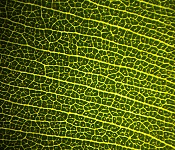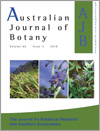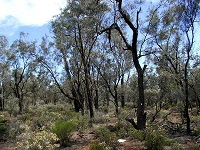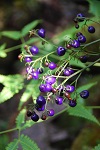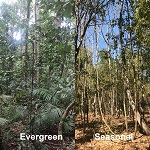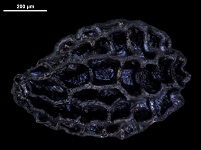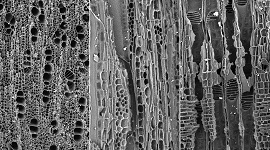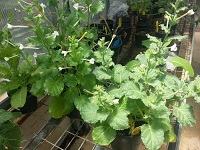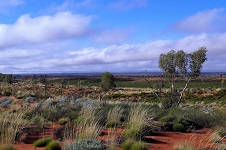Australian Journal of Botany
Volume 66
Number 3 2018
Many eucalypt species undergo a pronounced shift in leaf morphology and anatomy during their lives. We investigated whether such shifts, often thought to be an adaptation of young plants to shade, are linked to environments with denser vegetation across the continent of Australia. We found that a dimorphism in venation is linked to closed environments, suggesting that the more forested environments of Australia are conducive to species in which juveniles conserve water, but adult trees are more hydraulically profligate so as to maximise growth.
Semiarid woodlands of south-east Australia are threatened by lack of regeneration and decline in perennial diversity. Ecological understanding of seed stored in the soil is required to determine likely recovery of perennial plant populations following cessation of grazing. Our study showed freshly collected seed germinated readily for most species; however, few perennial species germinated from soil samples suggesting recovery of perennial diversity is unlikely to occur from a soil seed store
Dianella sandwicensis is a Hawaiian endemic desirable in restoration projects, but its seeds are dormant. We studied embryo growth and determined the temperature requirements for dormancy-break and germination. Embryos must grow before seeds can germinate, and 20/10°C was optimal for embryo growth and germination, suggesting that propagation from seeds would be facilitated by relatively cool autumn temperatures.
Rainforest species are divided into pioneer and climax guilds based on seed germination and other traits, based on generalisations derived from tropical evergreen rainforest. We investigated whether these seed biology traits used to categorise rainforest species into pioneer and climax guilds are applicable to Australian seasonal coastal rainforest in the Northern Territory. We found some seed biology traits, typical of pioneer or climax species of evergreen rainforest, don’t typically apply to the same guild of seasonal rainforest species.
Annual herbs are a diverse component of the flora of northern Australia, yet surprisingly little is known about their seed dormancy and germination requirements. We examined seed ecology in a charismatic genus of carnivorous annual herbs from ephemeral wetland habitats, finding evidence of localised adaptation between habitats with different growing season length. Ephemerality is a significant driver of ecology in northern Australia, and annual species from highly ephemeral habitats may possess some of the most complex germination requirements in the Australian flora.
In New Zealand the native insect-pollinated plant species are predominantly visited by a range of insects and able to self-pollinate. An investigation into the pollination system of three native greenhood orchids found that the pollen of each species was solely carried by a unique fungus gnat species, all male, which suggests the orchids are sexually deceptive. This is the first reported case of a highly specialised native plant–insect pollination system in New Zealand and contributes to the knowledge necessary for future conservation of greenhood orchids in the native forests.
Illegal logging for charcoal production endangers biodiversity in several countries. In Brazil, the Cerrado biome has high conservation priority and the government needs to improve the control of species use. Thus, we present the charcoal anatomy of 10 Cerrado species and an identification key to aid government during surveillance in the country and in other countries around the globe.
Several of the species of Nicotiana indigenous to Australia occur in arid parts of the country. Laboratory accessions N. benthamiana and N. occidentalis are used internationally as experimental host plants to study plant viruses and other pathogens, and as model species for studies of plant physiology and genomics. However, little is known about the genetic and physiological diversity of wild populations of these species. Here, we assessed accessions of four Nicotiana species from arid regions of northern Australia for response to water deficit stress. We found differential responses to water deficit stress both within and between species. This information will be important to researchers studying the mechanisms behind tolerance to water stress in plants.
In arid Australia, fires in summer often trigger increased recruitment compared with winter fires, and this can have important impacts on post-fire community composition. Here, the ecological mechanisms behind this effect were examined in four widespread arid Acacia species. Results indicated that increased recruitment after summer fires probably relates to a combination of increased dormancy breaking potential of high soil temperatures during summer fires, and improved temperature conditions for germination in soils after summer fires.
